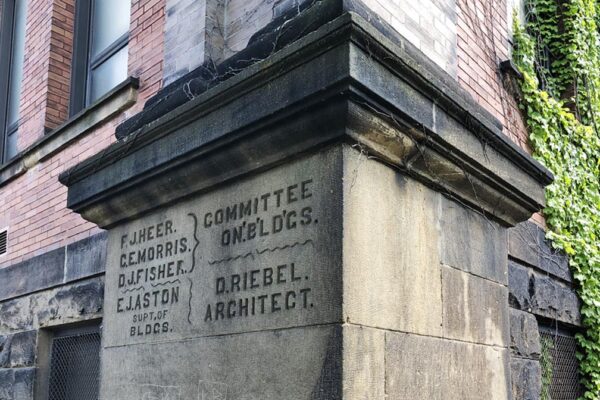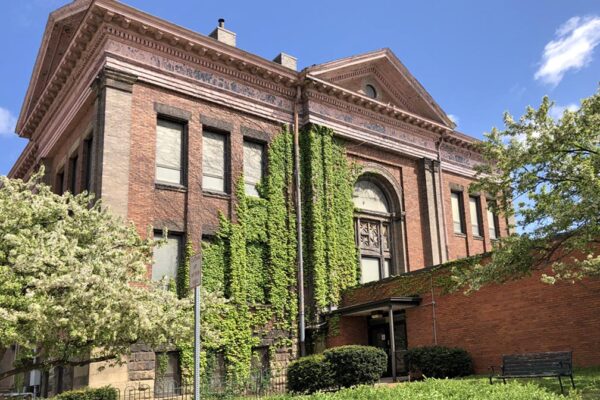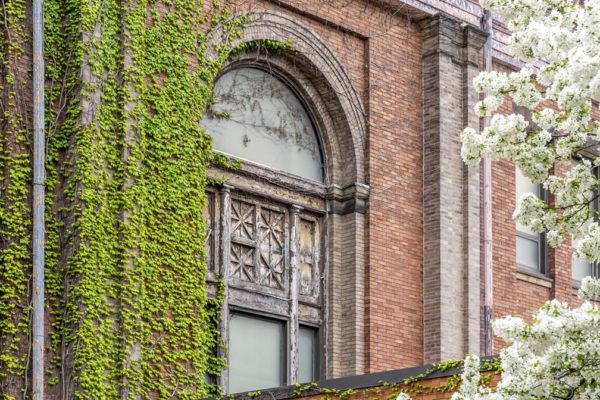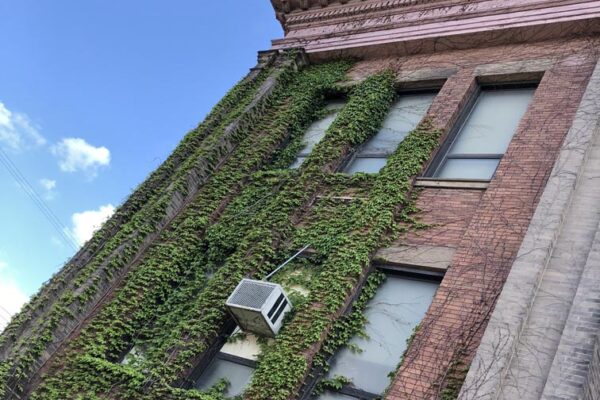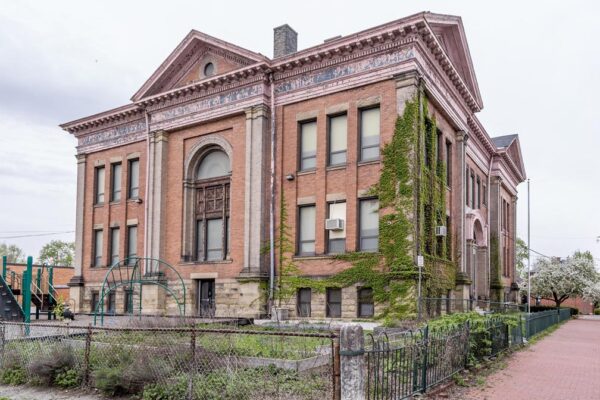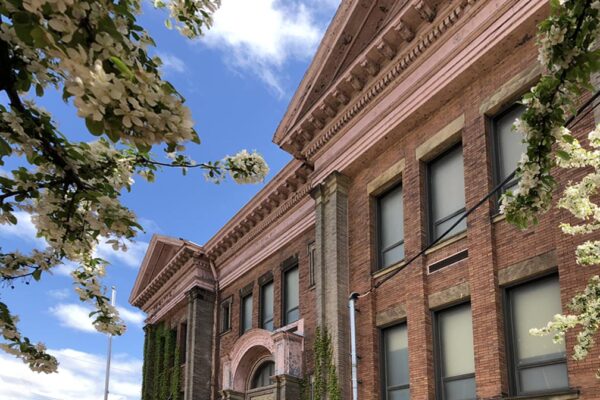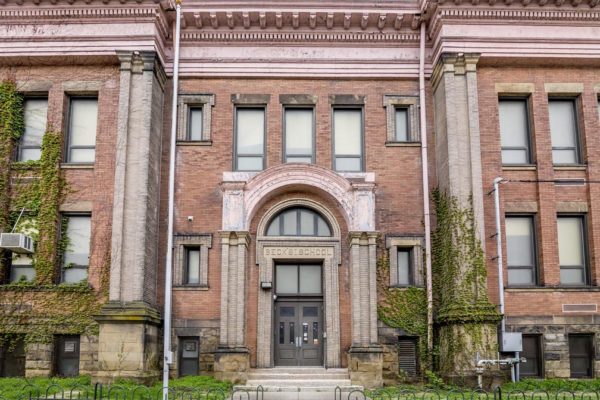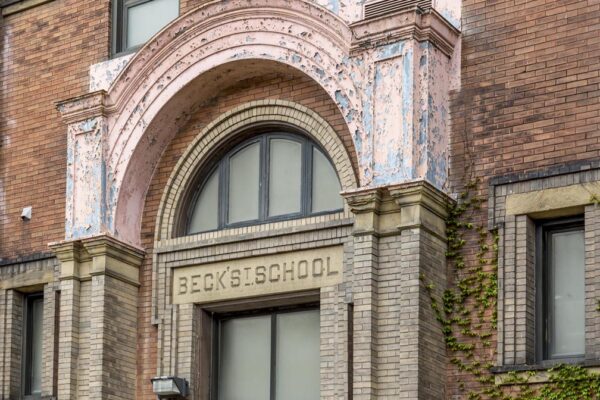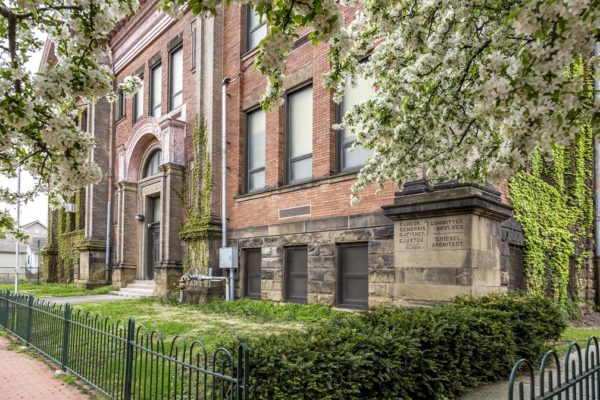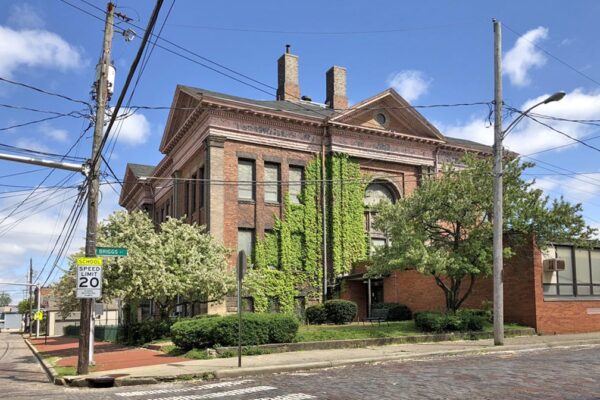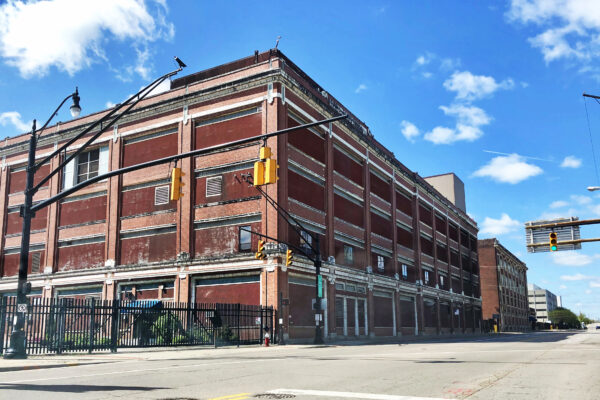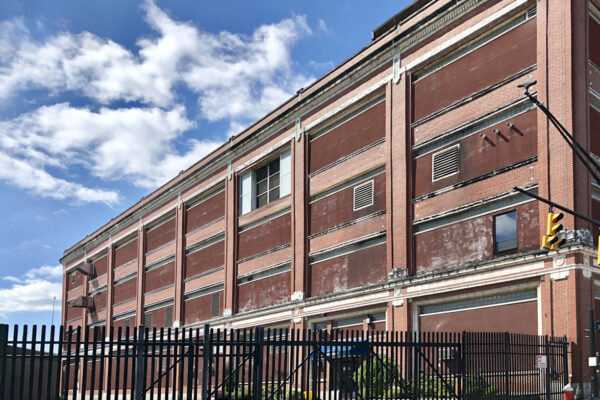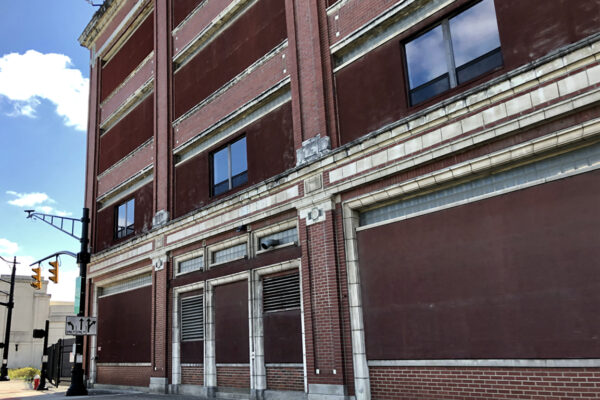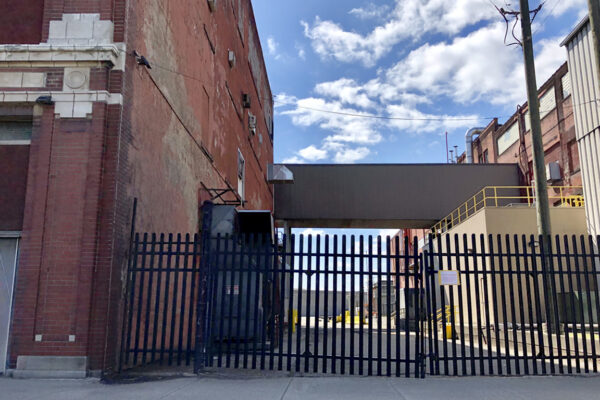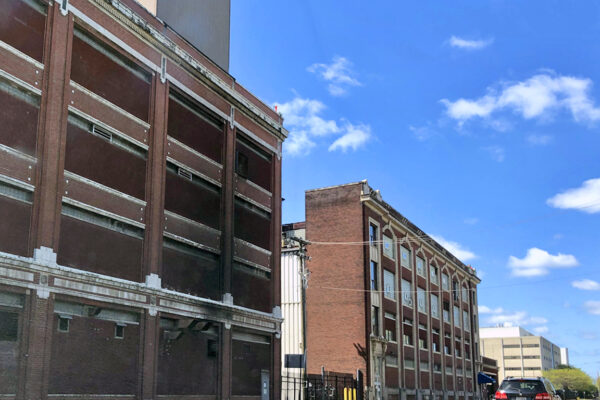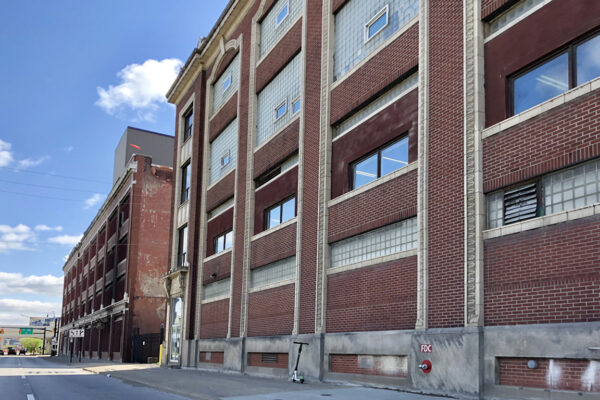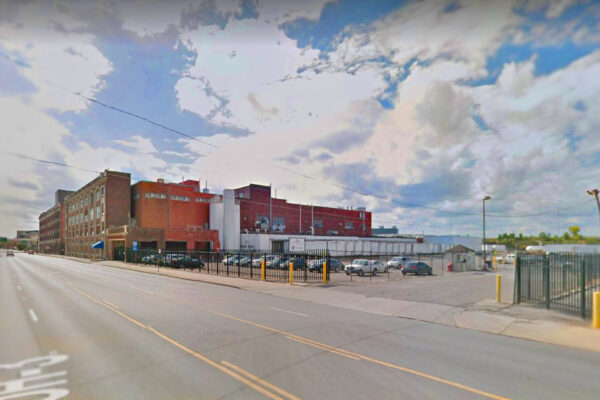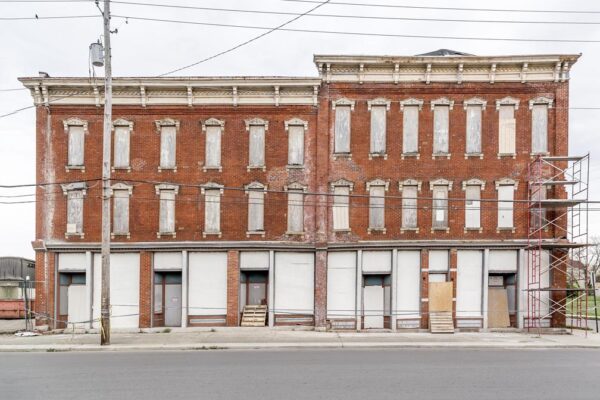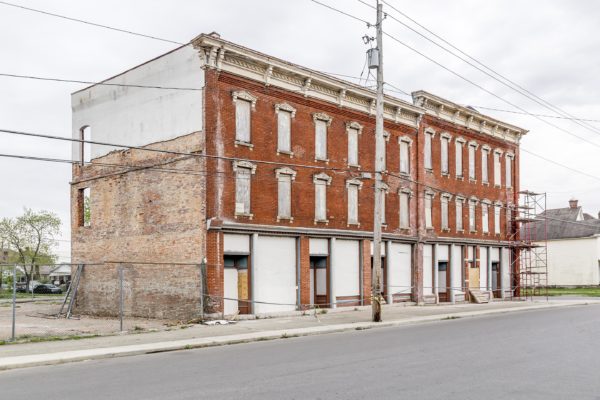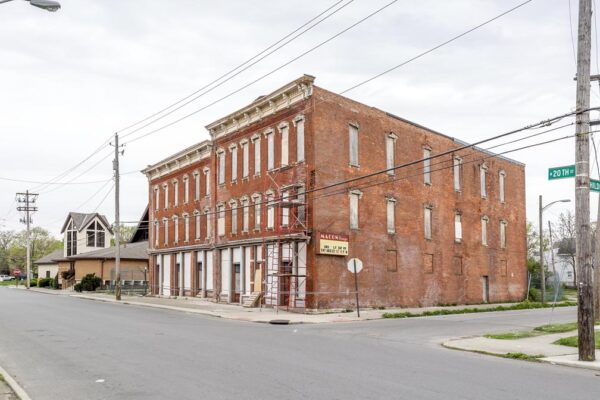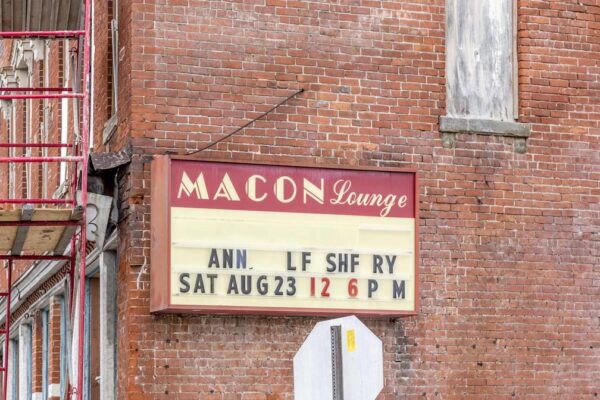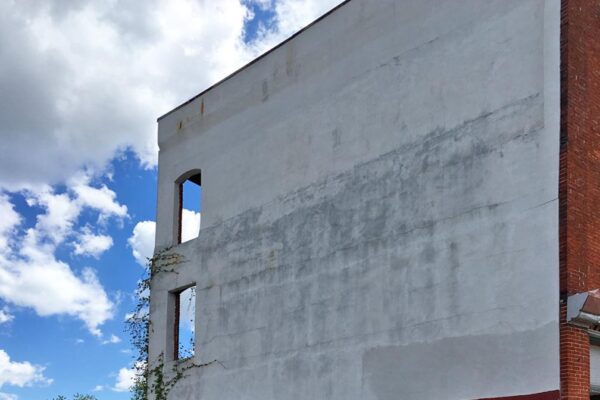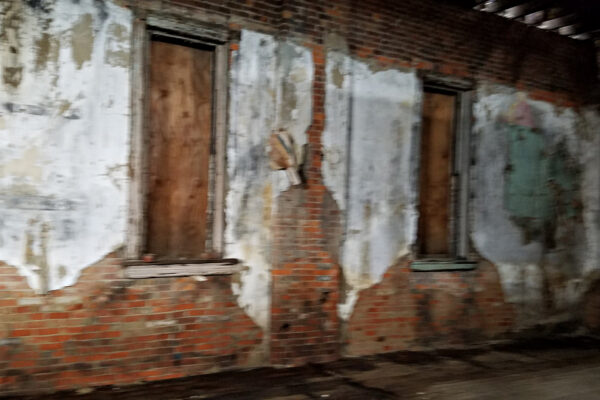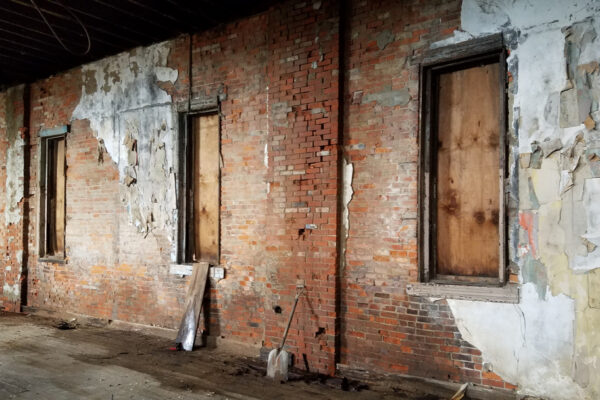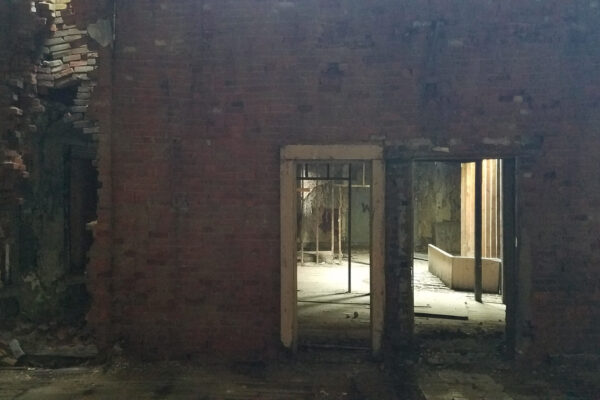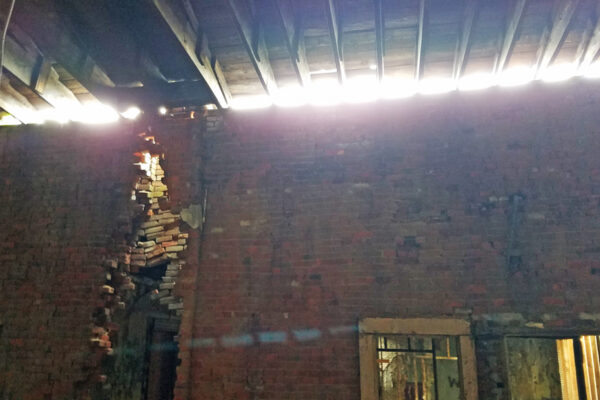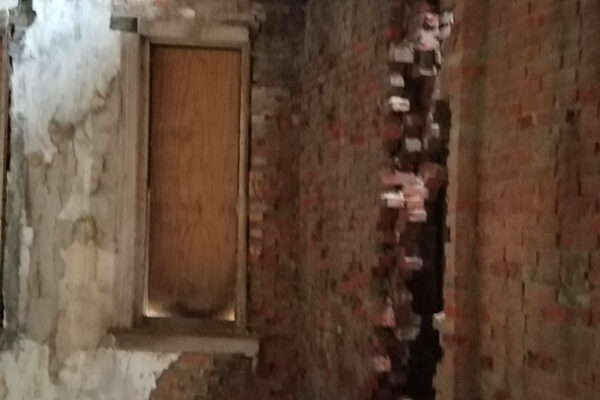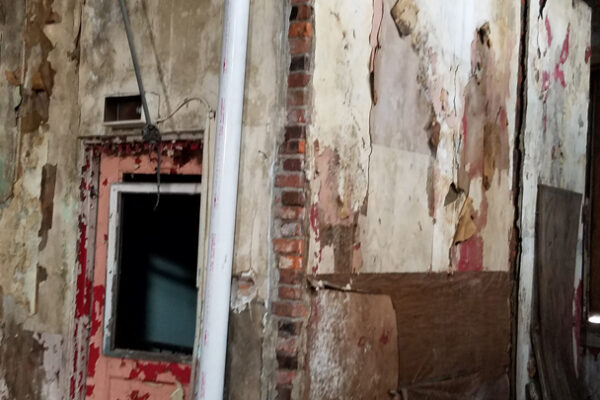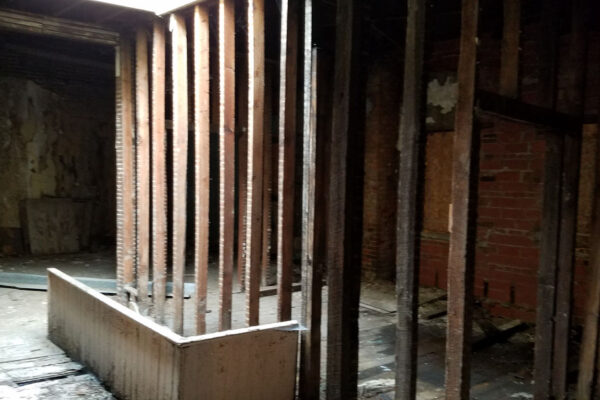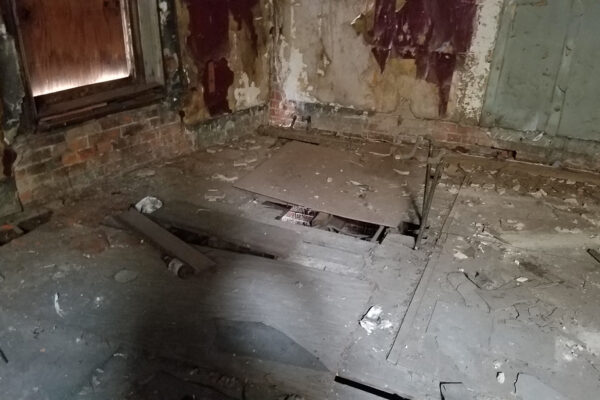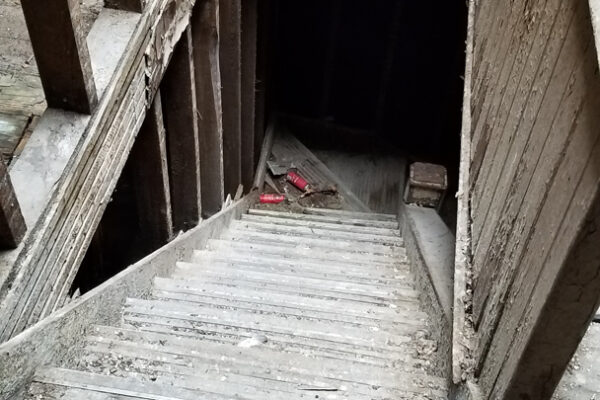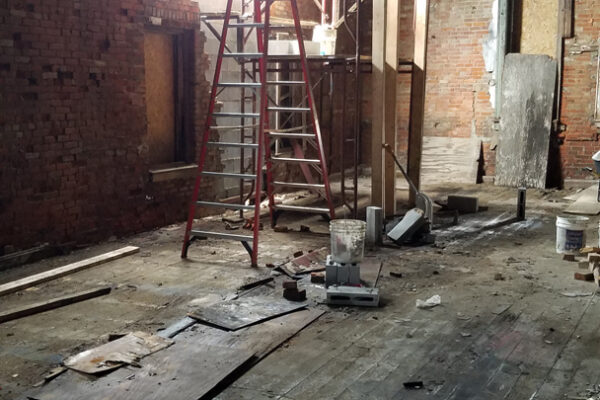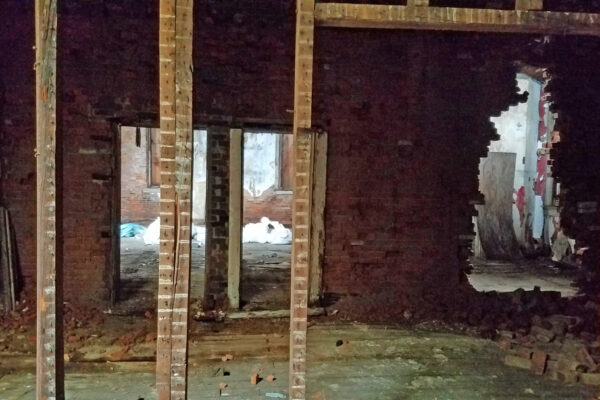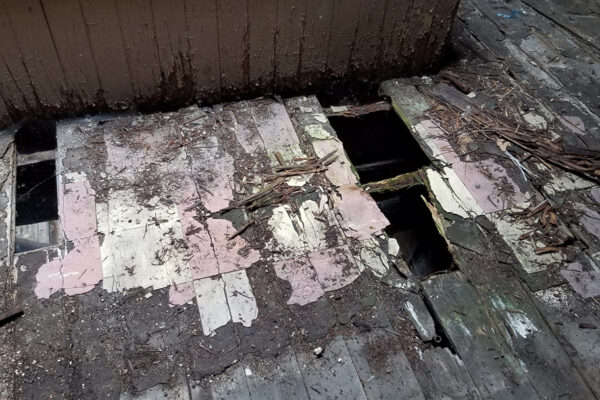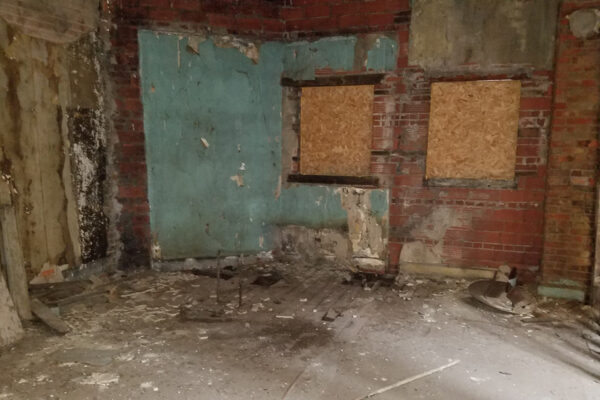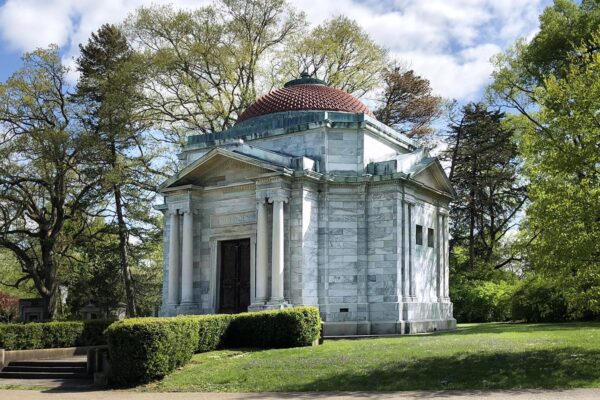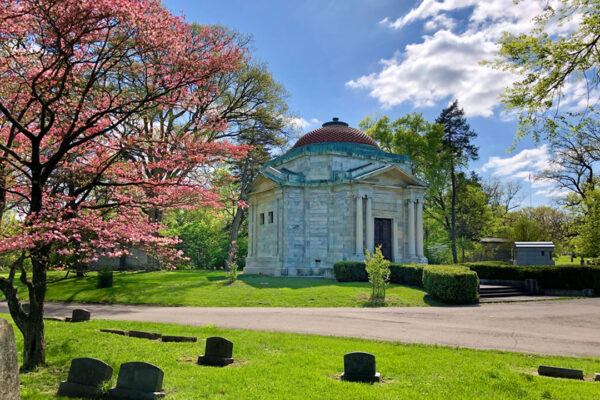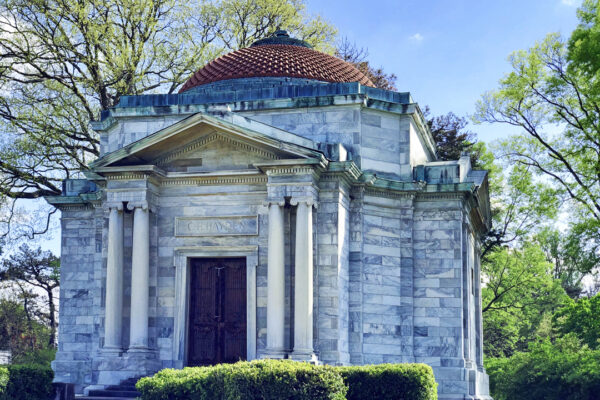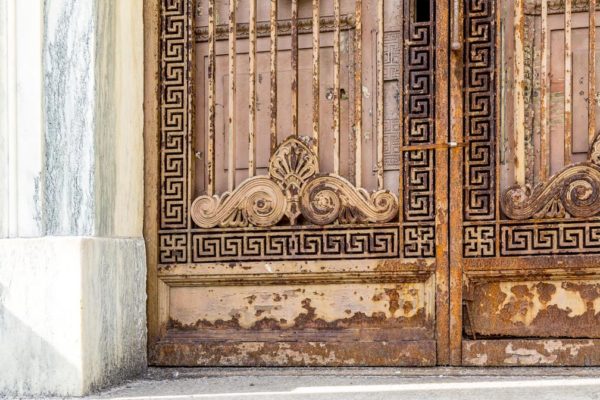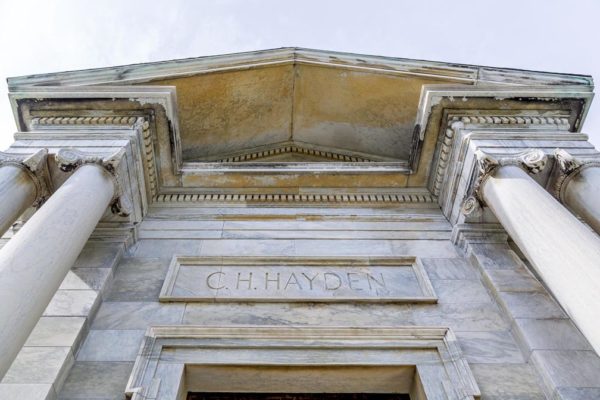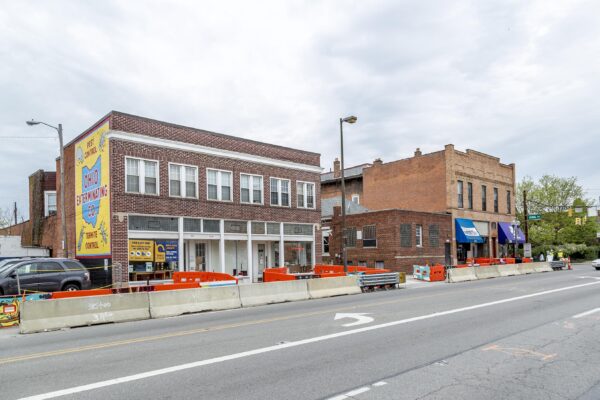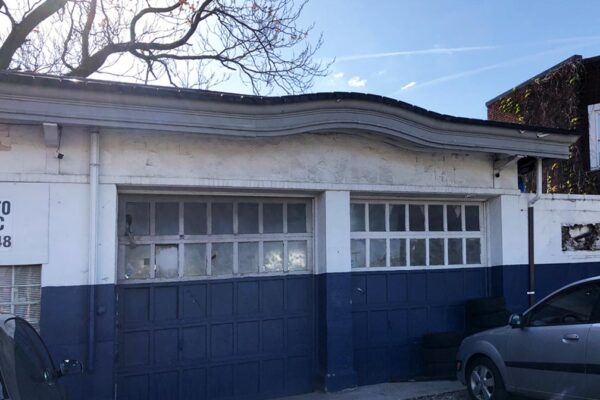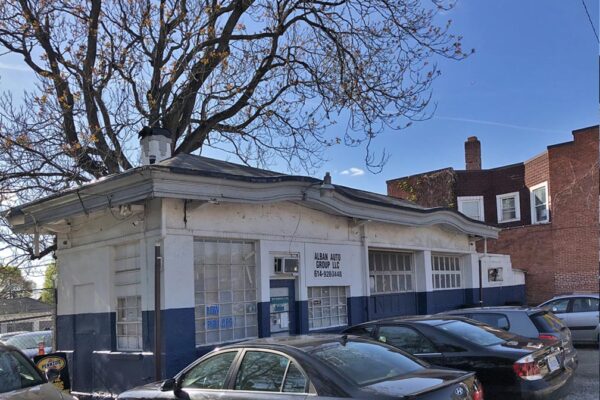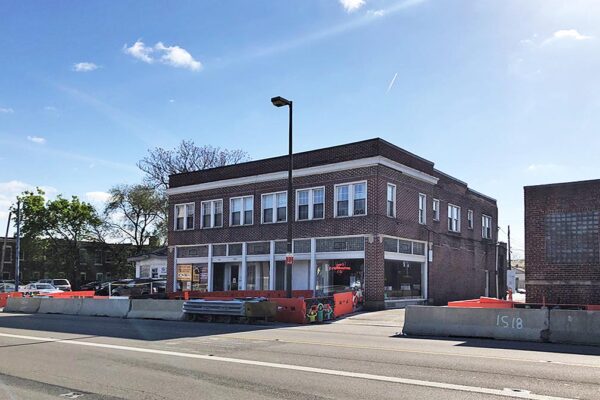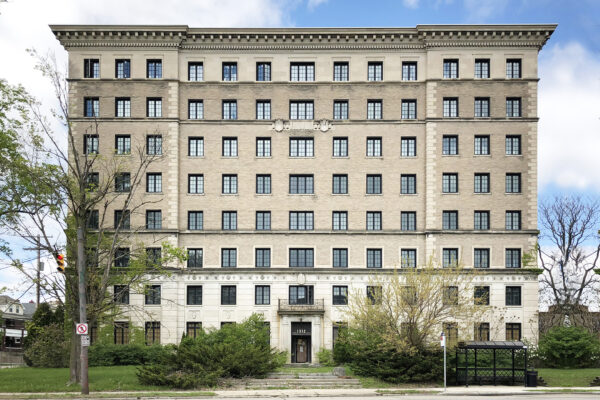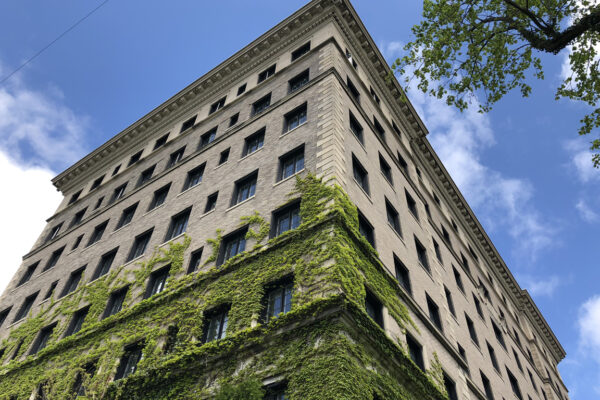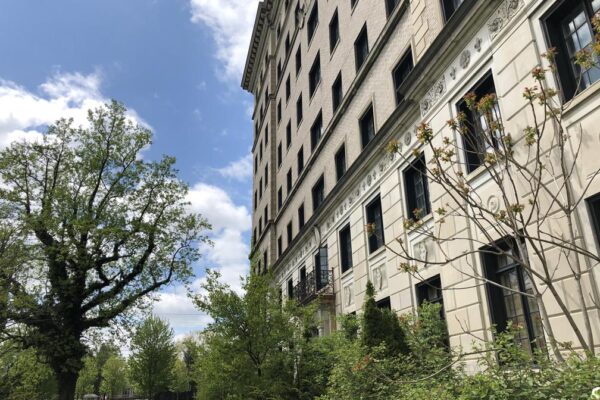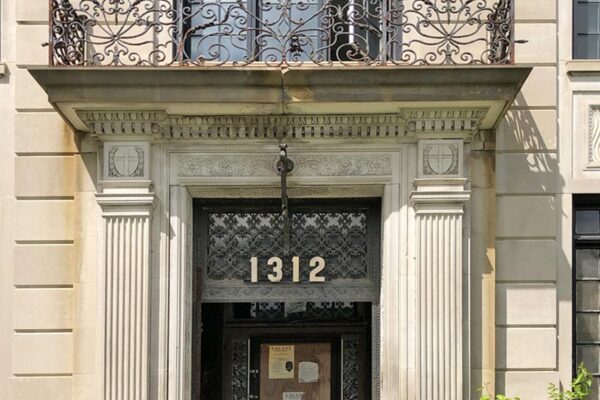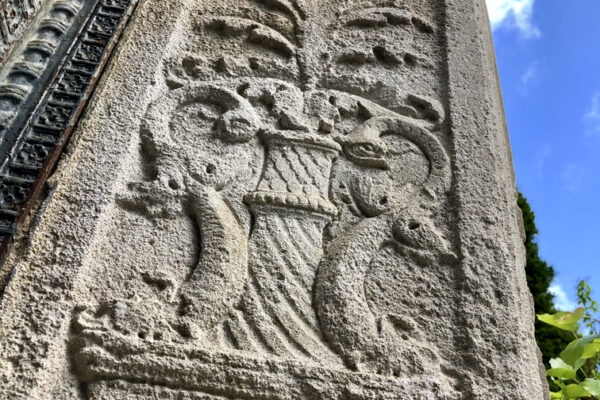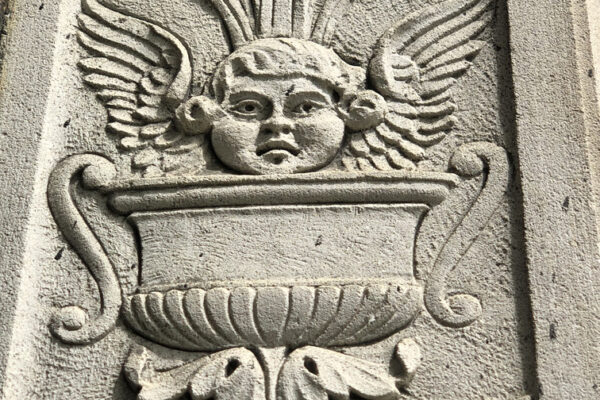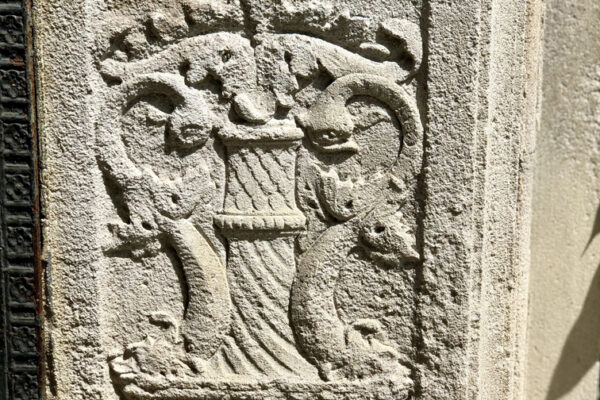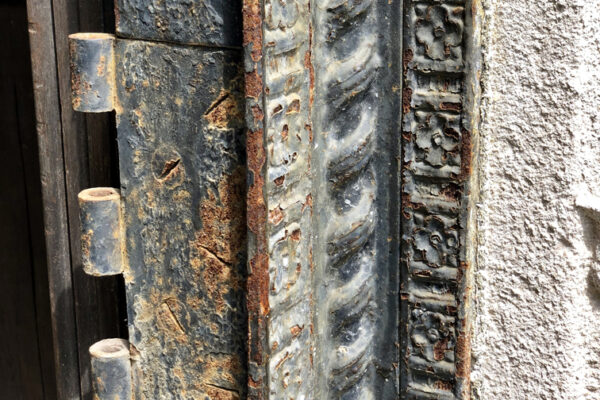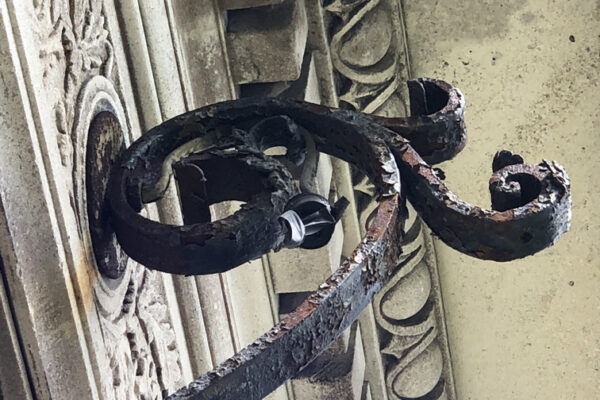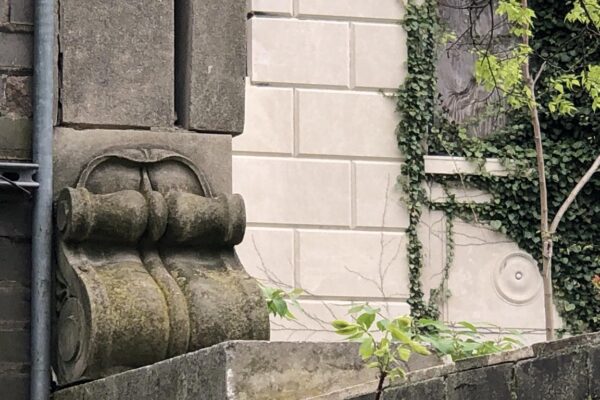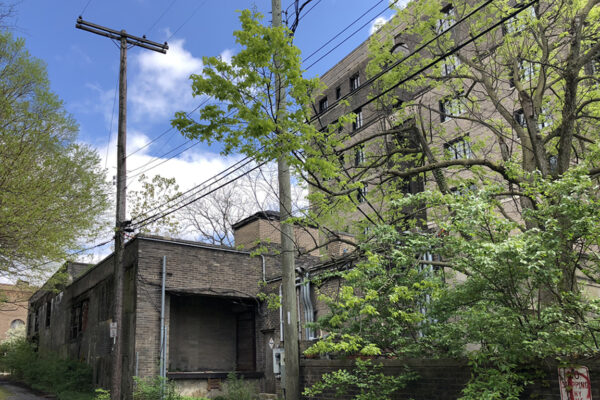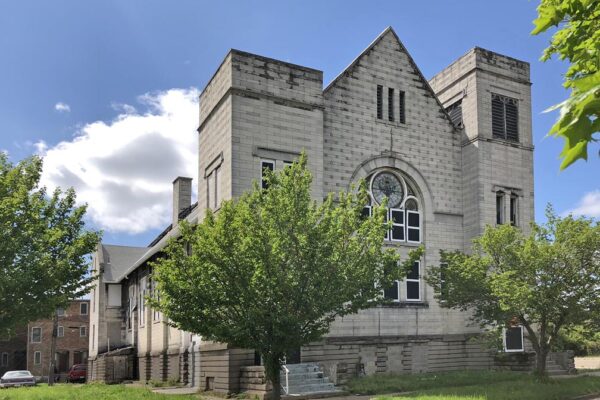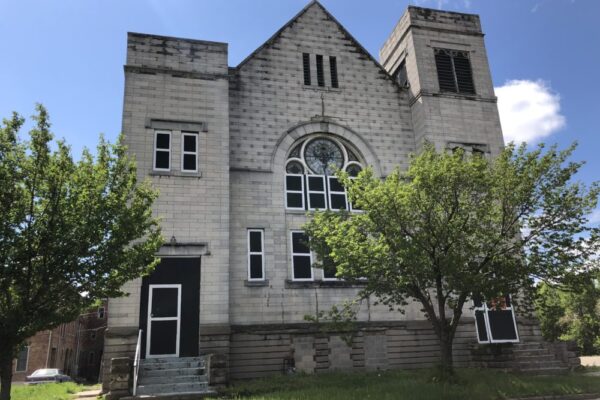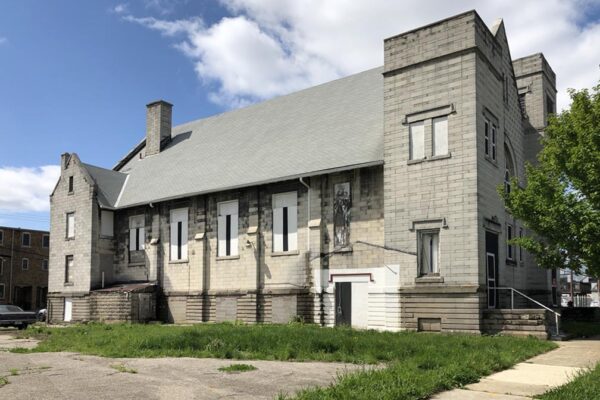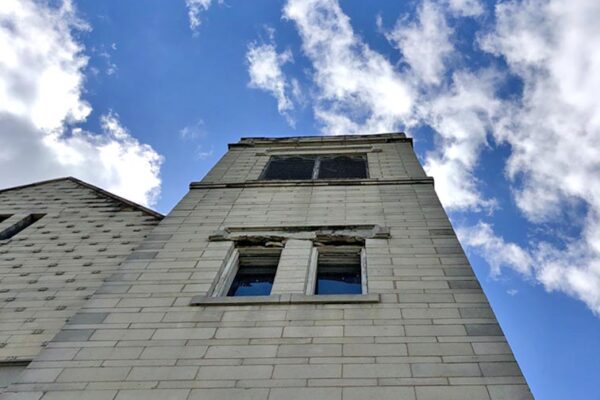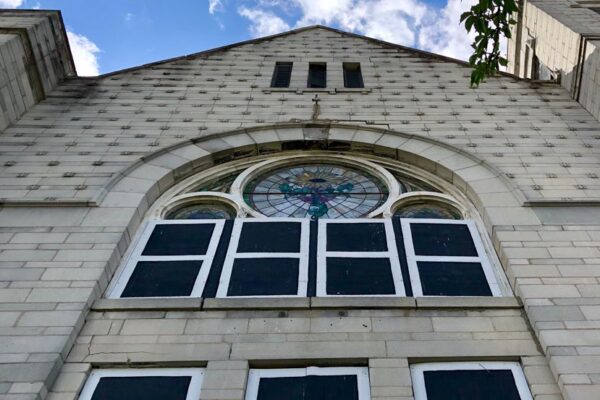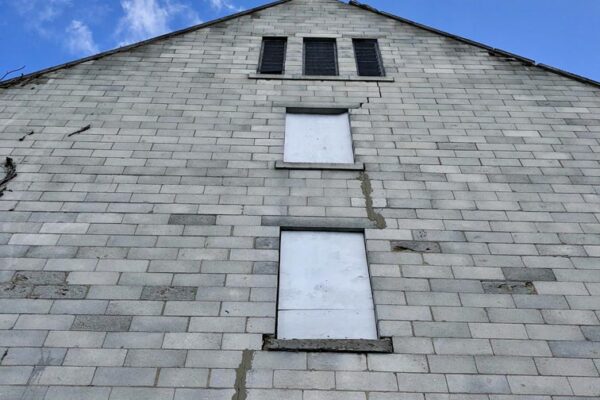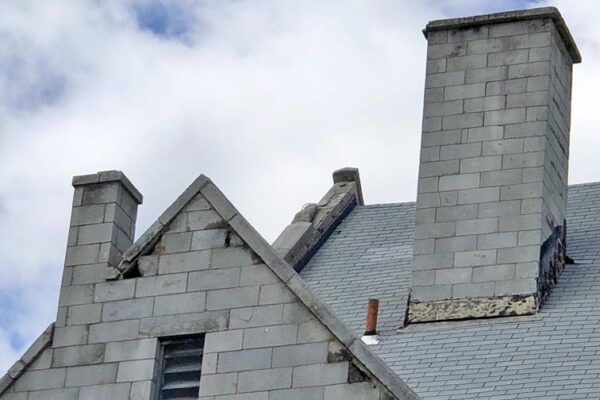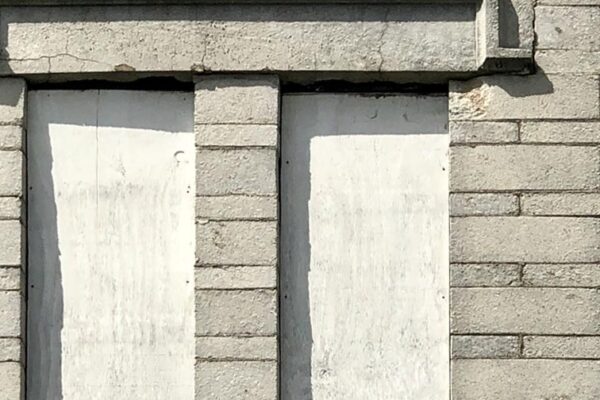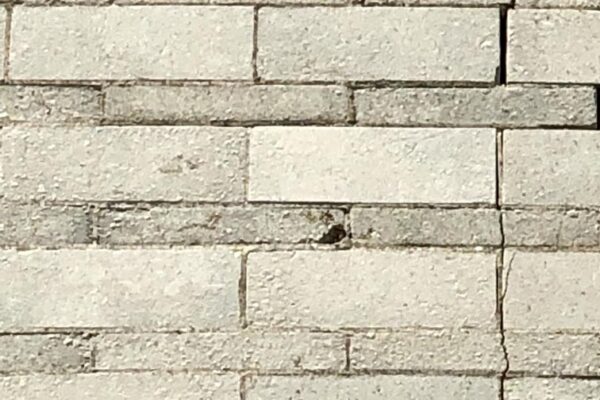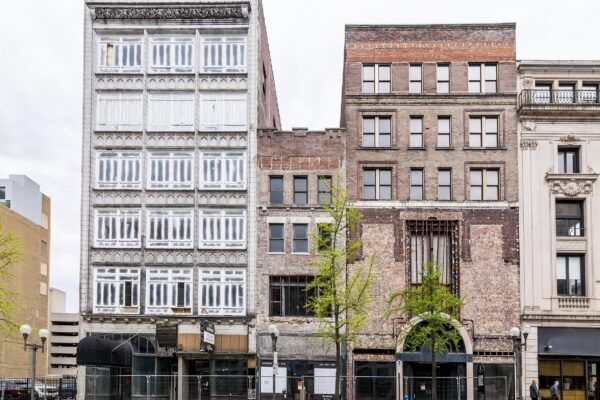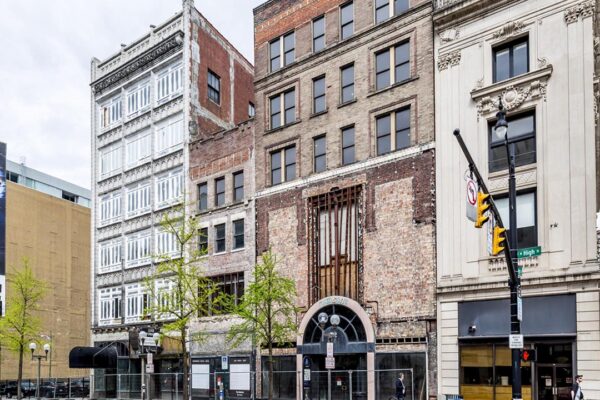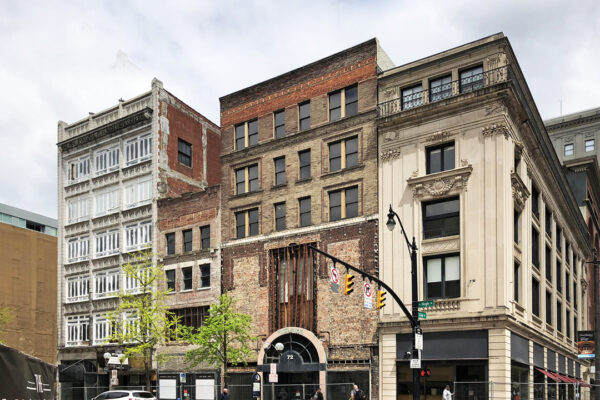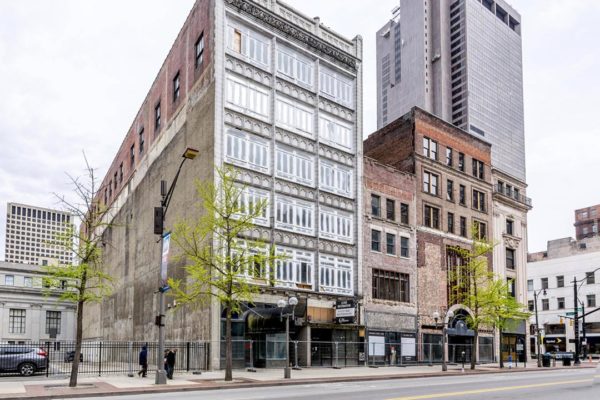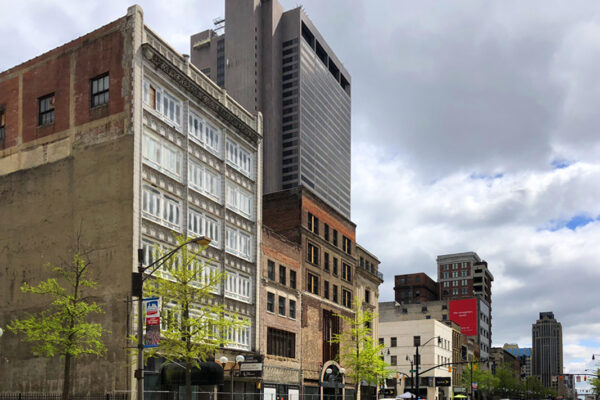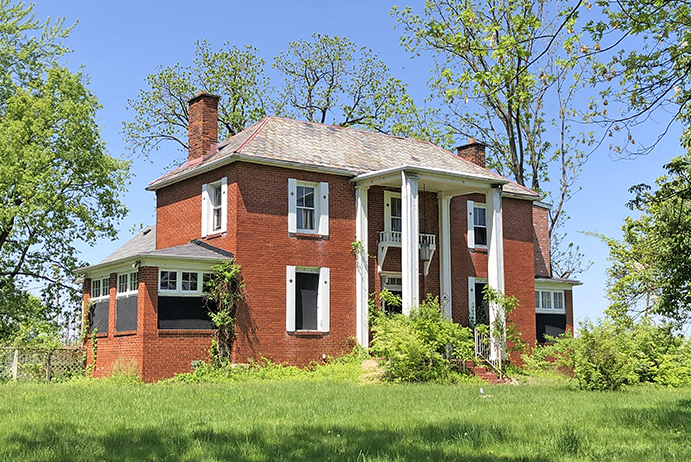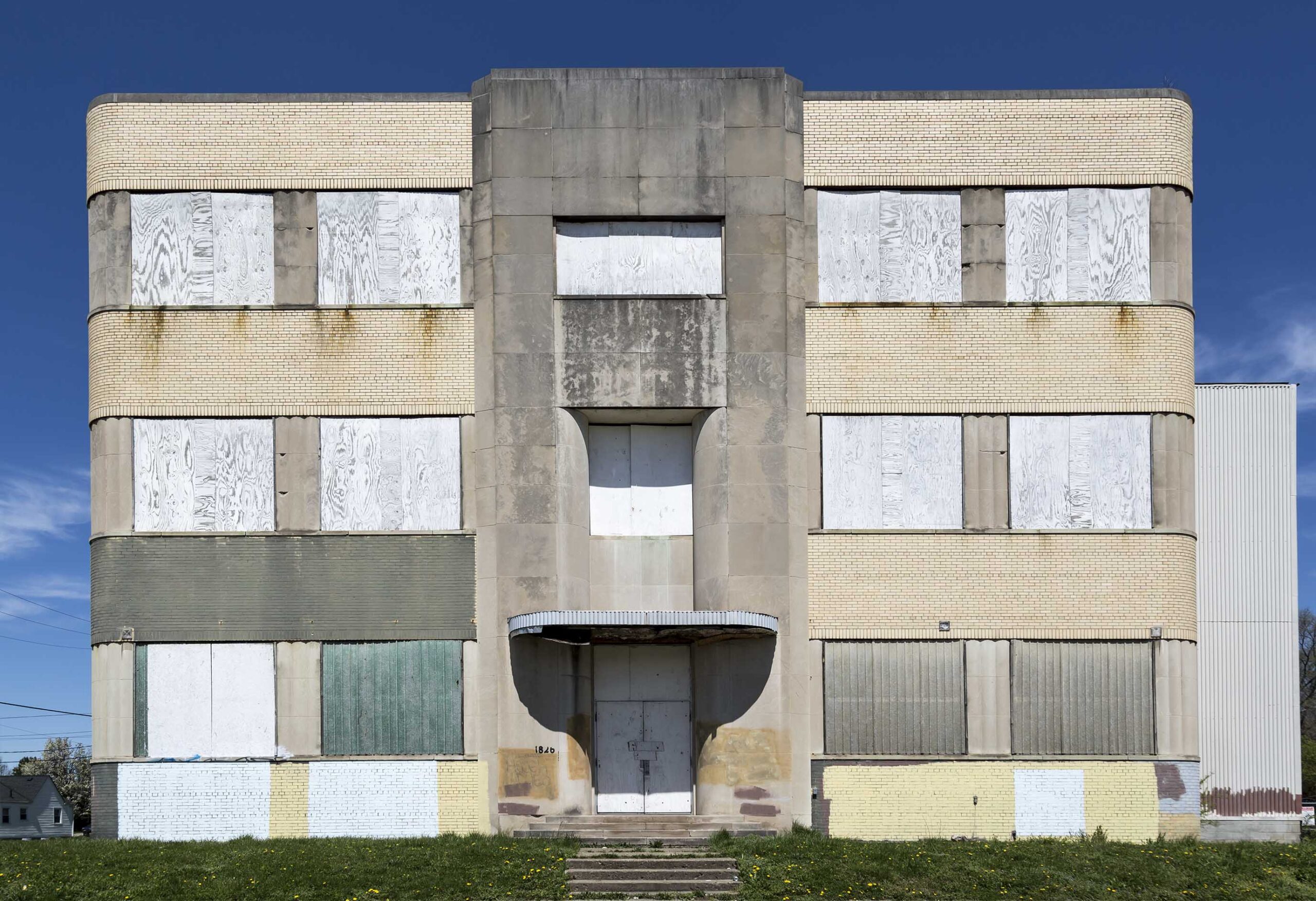Columbus Landmarks Publication
The annual list of Most Endangered Sites
to create awareness and stimulate redevelopment of historic properties.
This list represents an immediate opportunity to achieve our vision for Columbus: a thriving, creative city that values and protects its architectural and cultural legacy and is committed to equity, sustainable growth, and design excellence.
Save Historic Sites
2019 Most Endangered Site
Beck Street School
387 E Beck St, Columbus, OH 43206
1884
010-066704-00
”Beck Street School was designed by David Riebel, the first architect of Columbus Schools,...
This stately masonry school building, evoking a Richardsonian Romanesque style, features symmetry, intricate dental detailing and perimeter brackets, and a stone arch. Beck Street School was designed by David Riebel, the first architect of Columbus Schools, and has stood in historic Schumacher Place near German Village for 135 years. Riebel designed nearly 40 Columbus public schools between 1891 and 1921, and they are some of our most notable landmarks. The building rests on a massive stone foundation and reflects the civic value accorded to education at the time.
2019 Most Endangered Site
Kroger Bakery /Ford Assembly Plant
457 Cleveland Ave, Columbus, OH 43215
1914
010-015761-00
”Designed by Ford Motor Company's architect John Graham, this brick factory served as a Model T assembly plant.
The Ford Motor Company built this substantial brick factory with ornamental white terra cotta trim across Cleveland Avenue from Fort Hayes. Designed by Ford Architect John Graham, Model T parts arrived by train and were assembled here and distributed to area dealerships until c1925. Assembly at this site ended in 1932 and the plant closed in 1939. The building was later adapted as an expansion of the neighboring commercial bakery for the Kroger Company where 14 production lines filled downtown Columbus with a sweet aroma for 90+ years. The Kroger Bakery closed in February 2019, citing outdated layout of the plant and aging equipment, and eliminating 411 jobs.
The Kroger Bakery building is for sale and offers unique adaptive reuse opportunities in a downtown commercial corridor ripe for creative solutions for this one-of-a-kind, historic property.
2019 Most Endangered Site
Macon Hotel
366 N 20th St, Columbus, OH 43203
1888
010-021598-00
”...the Macon is a landmark associated with jazz history in the historic King-Lincoln/Bronzeville District.
Listed on the Columbus Register of Historic Places, the Macon is a landmark associated with jazz history in the historic King-Lincoln /Bronzeville District. The Macon provided regular lodging for African American musicians booked for shows in and around Columbus in the early to mid-20th century. It was transformed from a hotel to a club and lounge after World War II. The Macon was listed in the 1957 Green Book; the guide published for African American travelers to help navigate a segregated America. The building features stylized cornices and window corbels ornamenting the façade of the commercial brick structure.
The building was purchased in 2017 and plans to rehabilitate it for micro-unit apartments were announced. No visible progress has been made to date, but further deterioration is evident. Scaffolding was recently erected near the southeast corner after bricks toppled from the second story. The rear of the building appears unstable, and a large portion of the interior second floor has collapsed into the first floor.
2019 Most Endangered Site
Hayden Mausoleum
1000 Green Lawn Cemetery, Columbus, OH 43223
1920
140-000205-00
”The largest single-family mausoleum in central Ohio was designed by noted architect Frank Packard.
The largest single-family mausoleum in central Ohio was designed by noted architect Frank Packard. The classical stone construction with terra cotta tile and stained-glass dome is meant to suggest a sunflower from above. Other features include oversized carved wood doors, iron gate, and an interior of lap and plaster with painted murals and a dozen marble sarcophagi in a circle. Peter Hayden arrived in Columbus in 1839. He established a carriage company, hardware business and later ventured into banking. His son, Charles, was his partner in the hardware business and later ventured into mining and manufacturing (Haydenville and Hocking Furnace). The Haydens were an important founding family of early Columbus, and their mausoleum is both unique and beautiful. It occupies a prominent lot in historic Green Lawn Cemetery.
The main branch of the Hayden family is gone and no funds are in place for the ongoing preservation of the mausoleum. Extensive damage has been done by vandals and there is significant water intrusion from the dome. Although the building has not been entered for about a decade, some examination was made of the dome roof and the cost of restoration exceeds what the Green Lawn Cemetery Association can provide on its own. There is a growing danger that the dome will collapse or that water damage to the interior walls will become catastrophic. The only obstacle to restoration is funding.
2019 Most Endangered Site
King & High Block
SW Corner of King Ave and High St, Columbus, OH 43201
1880s–1950
010-011228-00
”This block is listed in the National Register of Historic Places as part of the Short North Multiple Property Nomination.
This early 20th century mixed-use block represents a cohesive collection of architecture supporting viable small businesses. This block is listed in the National Register of Historic Places as part of the Short North Multiple Property Nomination. Buildings contributing to the significance of the district include the King Avenue row houses, constructed in 1905 to give tenants easy access to streetcars; an early service station that was built around 1925; and the 1905 Buckeye Block, built around an earlier Italianate residence, all representative of the commercial development of the neighborhood.
A St. Louis developer interested in redeveloping the block presented several concepts that would require partial demolition of the buildings before the University Area Commission Zoning Committee in April.
2019 Most Endangered Site
The Broadwin
1312 E Broad St, Columbus, OH 43215
1924
010-280891-00
”...was designed as a hotel in a fashionable Second Renaissance Revival style...
The early 20th century brought a major change in architecture type along East Broad Street with the introduction of luxury apartment buildings and commercial buildings to what was a boulevard of mostly mansions and churches. The 8-story Broadwin was designed as a hotel/apartment in a fashionable Second Renaissance Revival style and represents an early use of reinforced concrete construction. The Broadwin features a marble lobby and decorative trim that remain intact. The building is part of the East Broad Street Historic District listed in the National Register of Historic Places.
The Broadwin has suffered long-term vacancy and ownership changes, as well as vandalism and some deterioration. The current owner purchased the building in 2017 and has not yet been successful in obtaining historic tax credits to make the rehabilitation feasible. The latest proposal, contingent upon receiving tax credits in the next round, calls for a $17.6 million rehabilitation project to return the property to its original 46-unit configuration.
2019 Most Endangered Site
West Side Spiritualist Church
77 McDowell St, Columbus, OH 43215
1912
010-013943-00
”The Church survived the Great Flood of 1913 and more than 400 people took refuge there and were rescued from its sanctuary.
The West Side Spiritualist Church in Franklinton features two asymmetrical westwork towers between a gable-front with an arched window opening that contains a rose window and stone tracery. An entrance is located at each tower. The exterior walls consist of 8” load-bearing concrete masonry units with a 4” masonry veneer. A 1974 cornerstone that replaced the original cornerstone reads “Greater Christ Temple Apostolic Church”. The Church survived the Great Flood of 1913 and more than 400 people took refuge there and were rescued from its sanctuary.
The East Franklinton Review Board voted to approve demolition of the Church in February to clear the site for Homeport’s plan for a 50-unit affordable housing building. Conditions of approval include receipt of Low-Income Housing Tax Credits (application is pending); approval of new building design; and Section 106 Review.
2019 Most Endangered Site
White–Haines & Madisons Buildings
72, 78, 80–84 N High St, Columbus, OH 43215
1913, 1898, 1904
010-054935-00 | 010-011603-00
”These three buildings are part of the High & Gay Streets Historic District listed in the National Register of Historic Places.
This intact continuous stretch of historic commercial buildings represents a final puzzle piece in revitalizing an important block in downtown Columbus. These three buildings are part of the High & Gay Streets Historic District listed in the National Register of Historic Places. The White Haines Building at 72 N. High St. was designed by the noted architecture firm, Richards, McCarty & Bulford. The building’s façade is punctuated by large, three-across window bays and decorative terra cotta skin detailing. A parapet rises above a floating cornice that features a foliage motif. The neighboring brick four-story commercial building at 78 N. High and adjacent six-story brick building at 80-84 N. High, best known (and altered) as Madison’s Department Store, represent the thriving retail that was once concentrated downtown.
The Day Companies purchased the three buildings in 2015 and have a proven track-record of urban revitalization and historic preservation. Their proposed project was awarded State and Federal Historic Tax Credits that have since expired. Continued vacancy and deterioration puts these buildings at risk.

